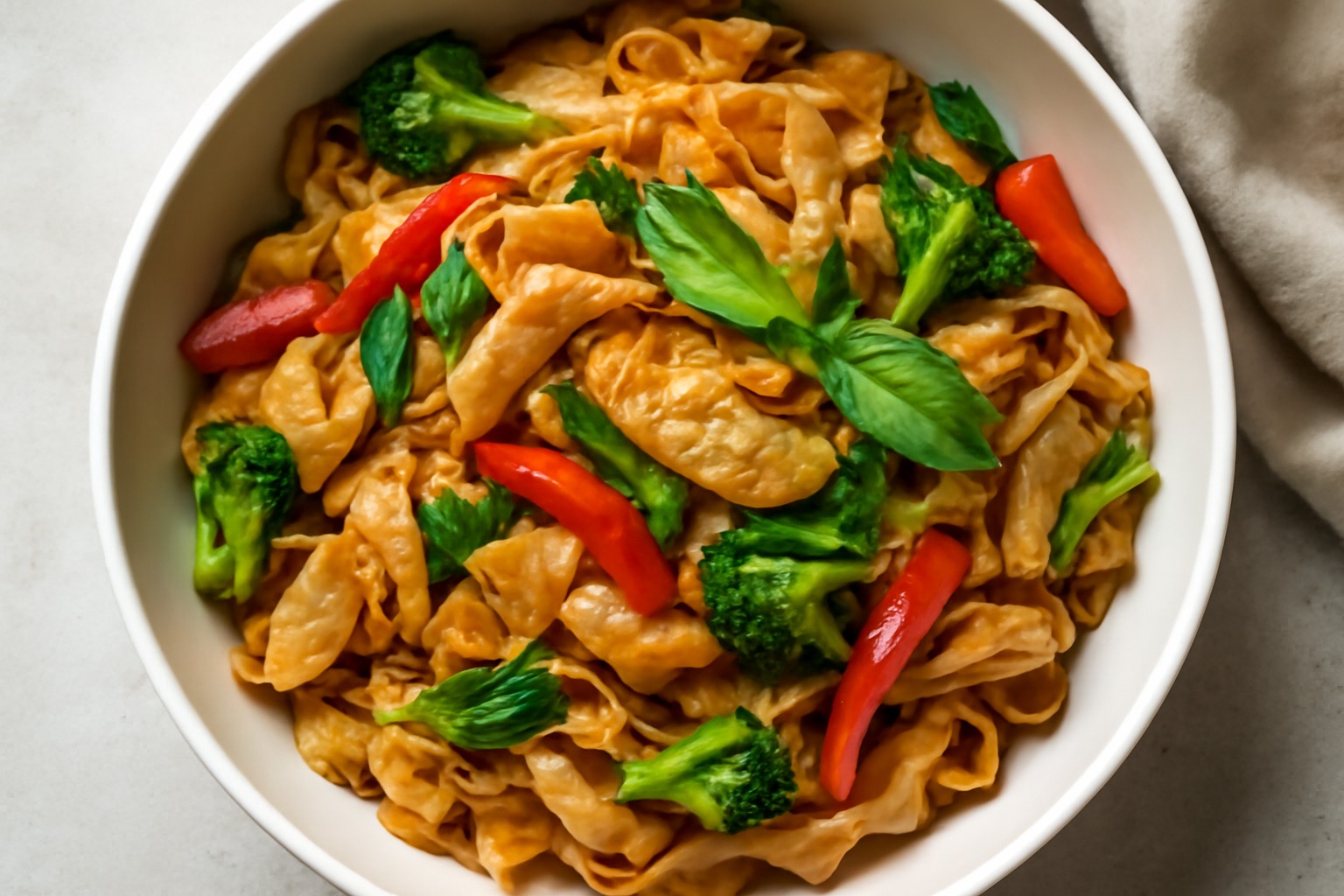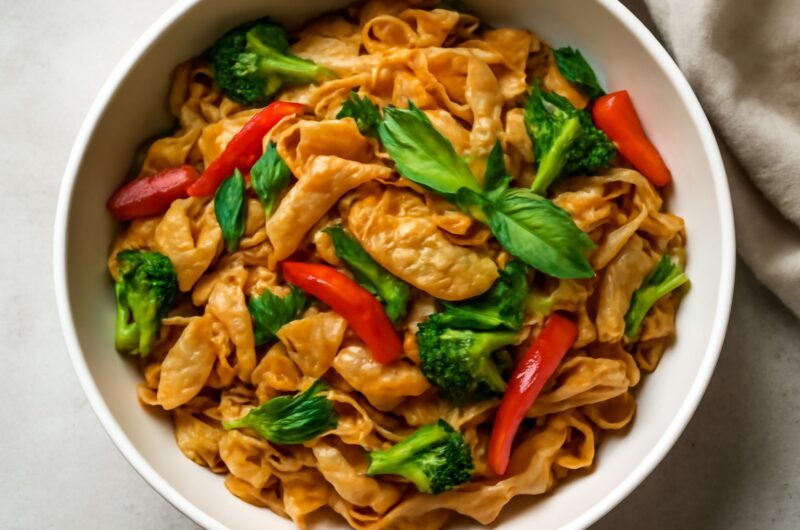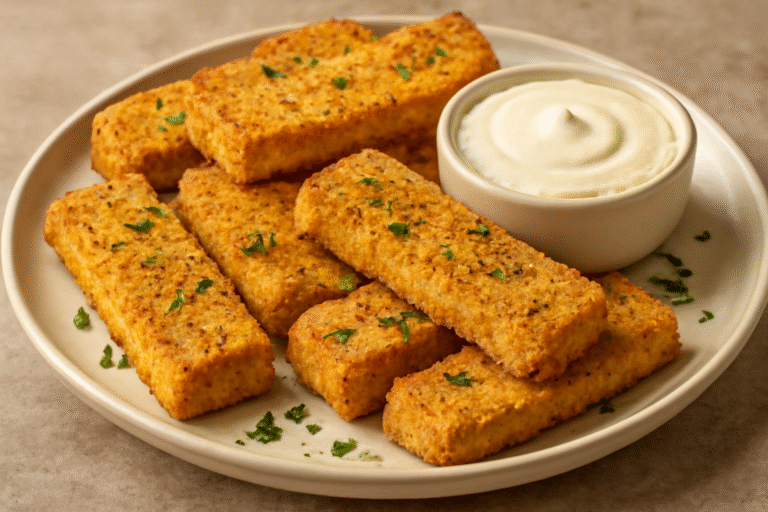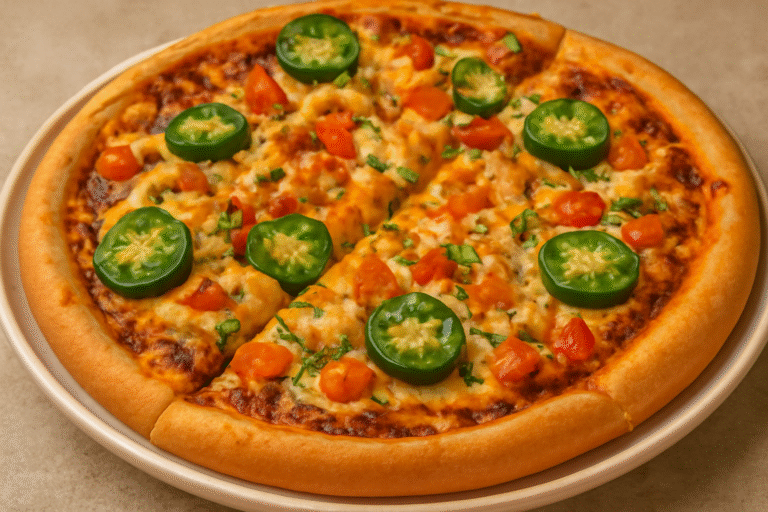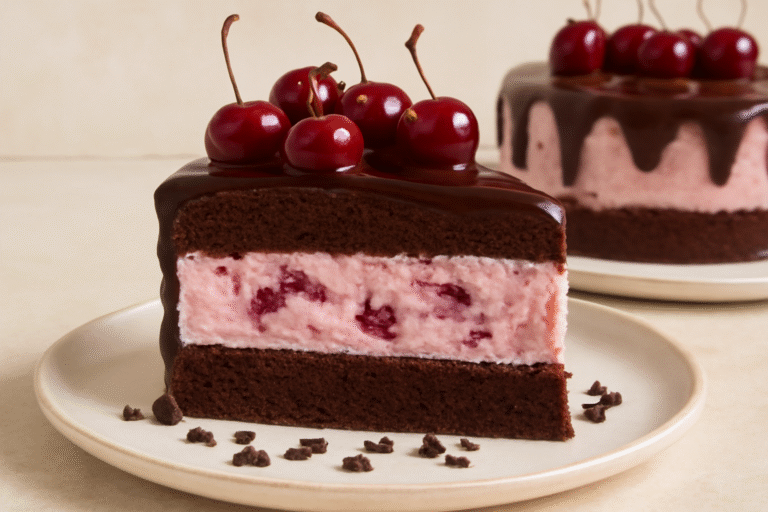Thai Drunken Noodles (Pad Kee Mao)
Thai Pad Kee Mao or Drunken Noodles refers to a brave and spicy stir-fried noodle dish and is popular in Thailand and gaining popularity in other countries all around the globe. With bold flavors, fragrant basil and mild satisfaction of spiciness on the side, Pad Kee Mao is an easy dish that delivers restaurant flavor to your dining room.
However, contrary to the name, Drunken Noodles are non-alcoholic. The preparation of the food has a special name because people believed this to be the best dish to have after a heavy night of drinking–or the spicy flavours are known to give you the kick of a high alcoholic drink.
Regardless of whether you are a connoisseur of Thai cuisine or are only getting acquainted with it, Drunken Noodles should find a place in your repertoire of favorite weekday recipes.
Drunken Noodles
Drunken Noodles (Pad Kee Mao): This mouth-watering Thai street food snack is a spicy dish that includes wide rice noodles that are stirred in an extremely hot wok with garlic, chili, protein, vegetables, and scores of Thai basil. The food gives a flavor overload with saltiness, heat, and sweetness.
Kee mao is Thai for drunkard. According to legend the recipe was invented either by a drunken cook using whatever was available in the kitchen or is spicy enough to wake up someone who has had one too many to drink.
What You Require
To get this food on your table, you will require a number of important ingredients and cooking appliances before you begin to prepare the cuisine. It is all about hot-hot-hot cooking, braising and fresh ingredients.
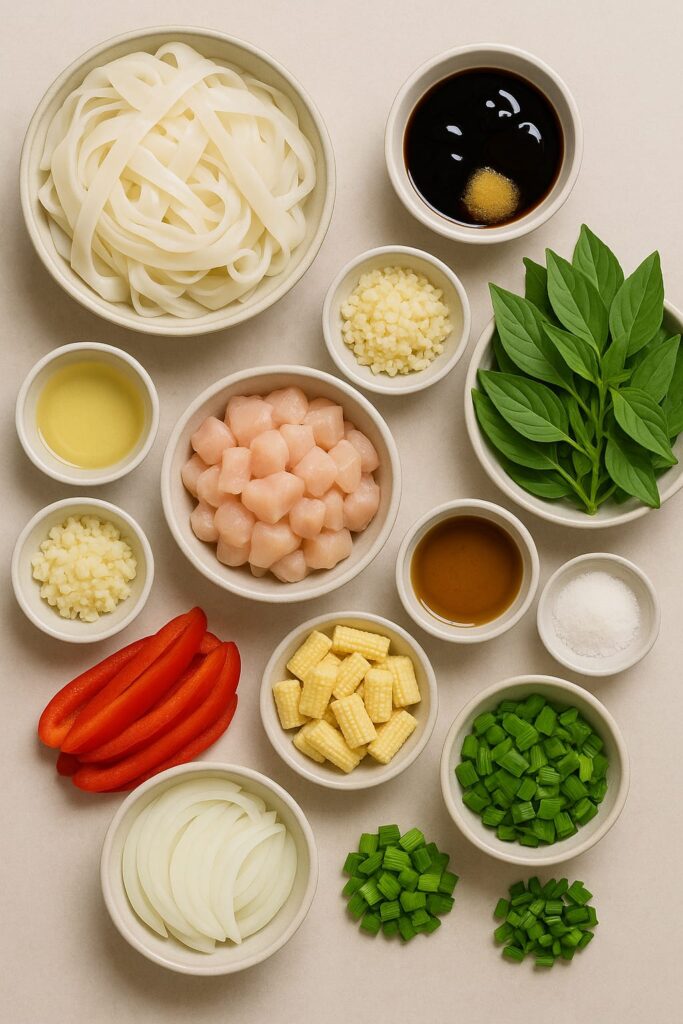
Pad Kee Mao or Thai Drunken Noodles
Course: MainCuisine: Thai2-3
servings15
minutes10
minutes420-550
kcalIngredients
Here’s what you’ll need to make 2–3 servings of Drunken Noodles at home:
Main Ingredients:
Ingredients
8 oz wide rice noodles (fresh or dried)
2 tbsp vegetable oil
4 garlic cloves, finely minced
3–5 Thai bird’s eye chilies, finely chopped (adjust to taste)
1 cup protein of choice (chicken, shrimp, beef, tofu, etc.)
½ onion, sliced
½ red bell pepper, sliced
½ cup baby corn, sliced (optional)
1 cup Thai basil leaves
2 green onions, chopped
- Sauce
2 tbsp oyster sauce
1 tbsp soy sauce
1 tbsp dark soy sauce
1 tbsp fish sauce
1 tsp sugar
1–2 tsp water (if needed to loosen sauce)
Method
- Make ready the noodles:
When using dried noodles then they should be soaked in warm water as instructed by the package until they become bendable yet solid. Drain, and reserve. - Preparation of the sauce:
Combine the oyster sauce, soy sauce, dark soy sauce, fish sauce and the sugar in a small bowl. Briskly stir until the sugar dissolves. Set aside. - Put your wok on heat:
Heat a wok or large skillet at medium-high or up to high heat. And put in oil and set to fry till it shimmers. - Sauté aromatics:
Add minced garlic and cut chilies. Stir-fry 15-20 seconds, until there is fragrance, and do not burn. - Proceed in cooking the protein:
Add any protein of your preference and stir-fry until cooked well done. - Add vegetables:
Add bell peppers, baby corn, add onions and stir fry another minute or two. - Add noodles and sauce:
Add the noodles and top it up with the dish. Stir-fry in order to cover the noodles equally. - Capitalise with Thai basil:
Close the heat. But add in the Thai basil and the green onions. Stir until breast. Serve hot.
Notes
- Avoid crowding your pan: A wide wok and hot flames will avoid making your food soggy.
- Try to use fresh Thai basil: Sweet basil can work as a last-minute substitute, but Thai basil is the one that has that bittersweet pepperiness.
- Pre-mix the sauce: it makes the whole process even and helps it not to burn.
- Day-old rice noodles should be used, in case they have been prepared in advance; they are more resistant during the preparation.
- Control the fire: Take out the seeds of the chilis or cut down on the number of chilies in case you are allergic to them.
Other Adaptations and Changeable Variations:
Drunken Noodles are way versatile. The following are some of the methods that can be used to make the dish:
- Vegetarian/Vegan: as a protein replace with tofu and replace fish sauce with soy sauce. Choose vegan oyster sauce.
- Low-carb alternative: Replace the noodles with zucchini noodles, or shirataki noodles.
- Gluten-free: All sauces to be used should be gluten-free (in particular soy and oyster).
- Add veggies: Add mushrooms, carrots, snap peas or broccoli.
Special Equipment
Although you do not require a lot, some of them can improve your Pad Kee Mao:
- Wok: You can not get that genuine high-heat sear without it.
- Wok spatula or flat wooden spoon: A spoon with which to stir-fry evenly.
- Sharp knife: To chop more finely garlic and chilies.
Comparison to Other Popular Thai Noodles
How is Pad Kee Mao different from Thai other noodle dishes?
- Pad Thai: sweeter, tangier and commonly put together with tamarind and peanuts.
- Pad See Ew: Less spicy and more flavorful in its taste with a profound soy sauce taste.
- Khao soy: A noodle soup of northern Thailand that is in the form of a curry and not stir-fried noodles.
The most adventurous in the group from the perspective of spice and aroma is Pad Kee Mao, whose Thai basil provides it with unique flavor.
Better Made at Home
Although Pad Kee Mao is great in many Thai restaurants, there are some benefits of creating the dish in the comfort of home:
- Spice content customizable
- Food with healthier oils and ingredient choices
- More fresh taste and texture
- Less expensive than take out
Moreover, cooking itself does not take long, and after all the preparations, the dish is ready in less than 15 minutes.
Storage and leftovers
Pad Kee Mao is to be served as fresh as possible; however, the leftovers can be kept fresh in the refrigerator for up to 3 days.
To Reheat:
- In a skillet or microwave use a non-stick pan.
- Sprinkle with a little water or additional sauce so the noodles will not dry up.
It is not advised to freeze the noodles, since they turn gooey after they have defrosted.
Nutrition Facts (per serving)
Estimated cost (depends on the stuff used):
- Calories: 420–550
- Protein: 20–30g
- Carbohydrates: 45–60g
- Fat: 15–25g
- Fiber: 4–6g
- Sugar: 6–9g
- Sodium: 900–1200mg
To lighten up the meat, go with less oil and lean meat such as chicken breast or tofu.
Have You Tried This Recipe?
Are you a home cook of Drunken Noodles (Pad Kee Mao)? And we want to know how it worked out! Post your hints, variations or even a picture of your dish. Spice and noodle lover or water drinker, it makes no difference, this is one recipe that wishes to impress.
Be sure to call in a comment, rate the recipe and tag us, when you post your version on social media. Happy cooking!
